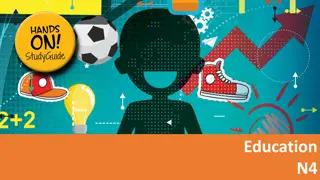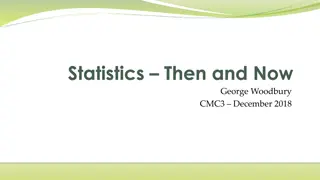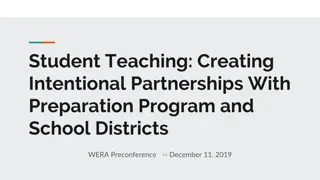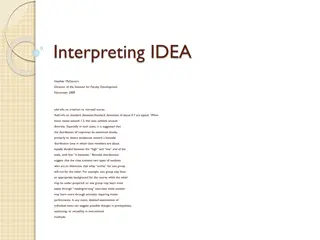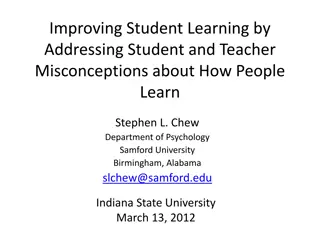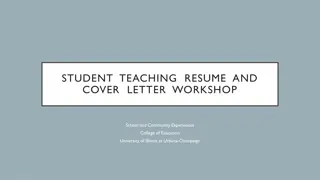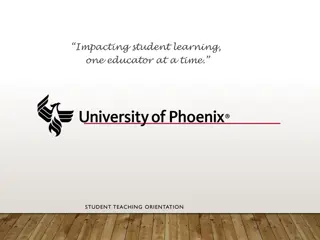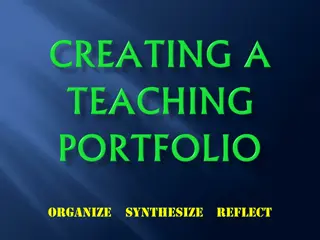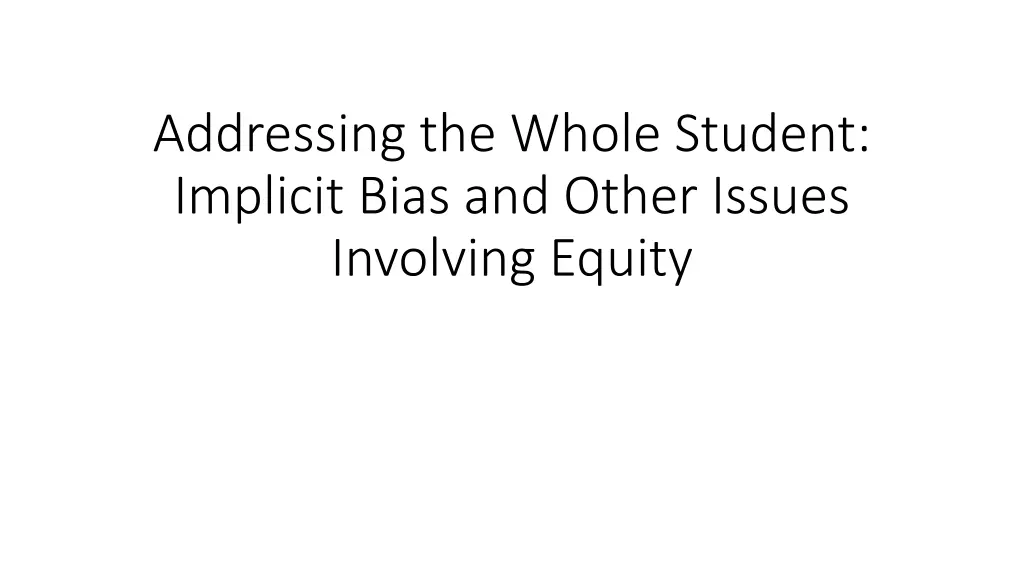
Addressing Implicit Bias in Education: Strategies for Equity
Learn how to recognize and address implicit bias in educational settings to promote equity and inclusivity. Explore ways to increase awareness, build empathy, and foster accountability in combating unconscious biases. Engage in discussions and activities aimed at creating a more equitable classroom environment.
Download Presentation

Please find below an Image/Link to download the presentation.
The content on the website is provided AS IS for your information and personal use only. It may not be sold, licensed, or shared on other websites without obtaining consent from the author. If you encounter any issues during the download, it is possible that the publisher has removed the file from their server.
You are allowed to download the files provided on this website for personal or commercial use, subject to the condition that they are used lawfully. All files are the property of their respective owners.
The content on the website is provided AS IS for your information and personal use only. It may not be sold, licensed, or shared on other websites without obtaining consent from the author.
E N D
Presentation Transcript
Addressing the Whole Student: Implicit Bias and Other Issues Involving Equity
Implicit Bias Implicit Bias unconscious preferences based on gender, race, sexual orientation, and other aspects of identity, usually favoring one s own group, but sometimes, among stigmatized populations, favoring the dominant group.
How do we address this issue at our institutions: Increase awareness- Implicit biases are present in people of all backgrounds and is not deliberate. Unconscious Bias by Sarah Fiarman in Educational Leadership, November 2016 (Vol. 74, #3, p. 10-15),
Name it when you see it- Conversations can be difficult. -Expect to experience discomfort -Stay engaged -Expect and accept a lack of closure What leads you to that conclusion? Would this decision be different if the family or child were of a different race or background? How would you make this decision if this were your own child? Unconscious Bias by Sarah Fiarman in Educational Leadership, November 2016 (Vol. 74, #3, p. 10-15),
Build empathy- Connecting with students and finding commonality among them can improve group communication and eliminate biases. Be accountable- Being aware of implicit bias does not solve it. Unconscious Bias by Sarah Fiarman in Educational Leadership, November 2016 (Vol. 74, #3, p. 10-15)
What do you think implicit bias is and provide one example that might occur in a classroom?
At your tables discuss strategies for dealing with the following scenarios from a: Peer (math instructor)- Students at this campus can t do math because they still count with their fingers! Student to student- You got a higher grade than me because you are Asian.
Exercise: Strategies In Creating an Equitable Classroom With the provided sheet consider the each suggestion and mark a: N for never used O for occasionally used R for rarely used W for something you would like to try ? for any that need more explanation or examples Tanner, 2013, Structure Matters: Twenty-One Teaching Strategies to Promote Student Engagement and Cultivate Classroom Equity. CBE Life Sciences Education, v. 12, p. 322-331.
Equitable Teaching Practices Summary Allow students opportunities to think and talk about geoscience Encourage, demand, and actively manage the participation of all students Build an inclusive and fair classroom community for all students Monitor (your own and students ) behavior to cultivate diverse geoscience thinking Teach all of the students in your classroom Tanner, 2013, Structure Matters: Twenty-One Teaching Strategies to Promote Student Engagement and Cultivate Classroom Equity. CBE Life Sciences Education, v. 12, p. 322-331.


